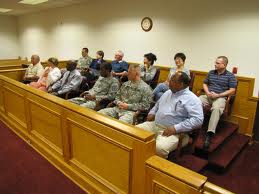 |
| Use passion |
Your closing argument started to be written with your Intake interview, right? If not, it should have so always do it that way from now on. Making notes along the way is so much easier than waiting until the night before your closing argument occurs. The key facts never change anyway. And your last minute time can be better used directing and finessing what you already had outlined.
Of course, since you started off in opening by telling the jury what you were going to prove, now is the time to tell the jury how you proved it. And, of course, what the other side did not prove.
Replay the opening promises of each side again and contrast where it was met by you and not your opponent. You don't need to harp on every aspect, but you certainly want to pound home your points on the important issues.
And where it is possible, use the defendant’s evidence that favors your side of the case. Point out statements from your opponent's witnesses and inferences from their evidence and direct support for your case that can be found in your opponent's own case.
Consider replaying video testimony from the trial during your closing - it is extremely powerful.
Also, work the jury instructions into your argument. You should have learned what instructions the judge is going to give the jury so fashion points in your argument around key aspects that the judge will instruct on anyway.
And most of all, be passionate as you tell the story of why your client should win and explain the damages question in plain everyday language and tell the jury what you want them to do. There's no point in letting them wonder about just how much it is that you want.
If you get a rebuttal argument, remember that rebuttal is really rebuttal plus another chance at closing argument. So use it wisely and precisely. It is not a time to do it all over again - it is a chance to point out the errors in your opponent's closing that they just heard and to remind them of why your side is right and why your side should win.
Finally, at the end, always thank the jury. What they are doing in your case is what makes the legal system work and they will never be thanked enough for it.
At each stage of the closing, they will be watching everything you do and listening to everything you say. Your communication will occur not just with words but also with your mannerisms, your body language, your style, and your content. Everything matters, so do it right and with passion.
And remember that your communication with the jury starts before you think it does and ends after you thought it already had. Use every moment of it to your advantage.
Ronald L. Burdge
Helping lawyers help clients for over 25 years.



